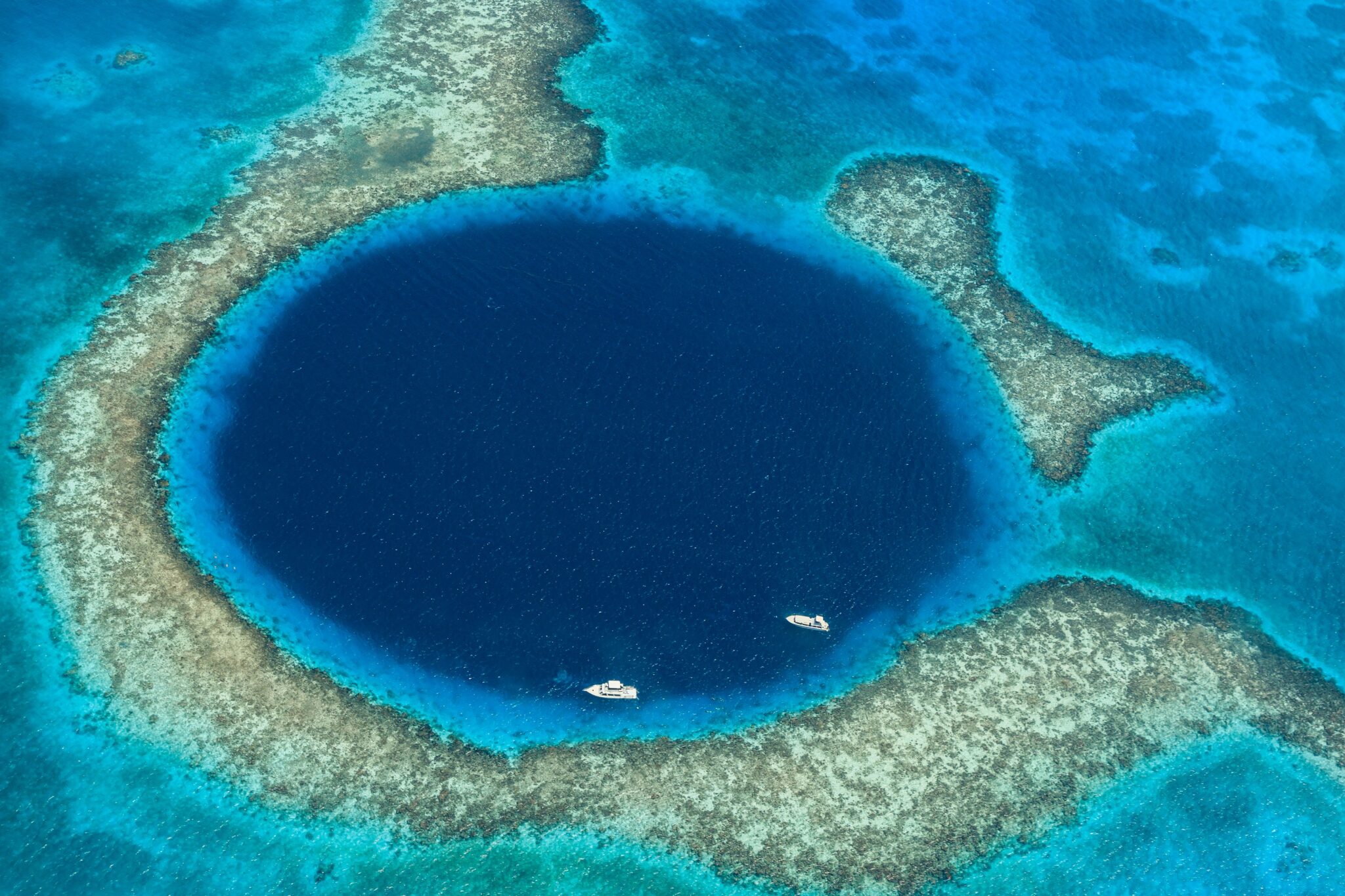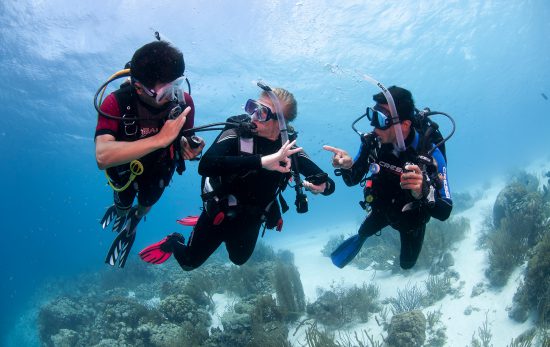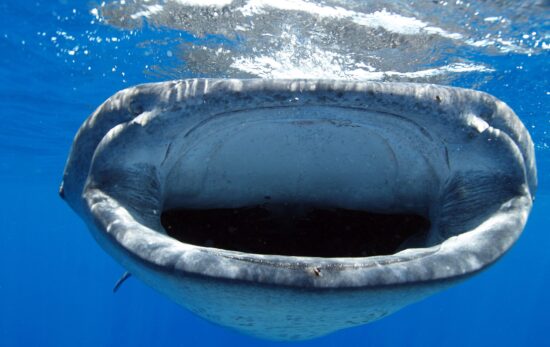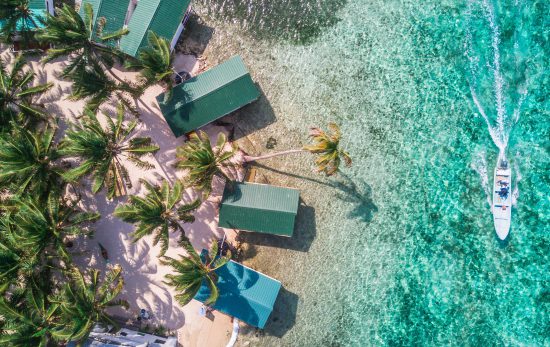The Great Blue Hole in Belize is one of the most famous dive sites in the world. When I tell people I’m a diver, “Have you been to Belize to dive the blue hole?” is one of the first questions they ask…after, “Aren’t you afraid of sharks?”
Should The Blue Hole in Belize be on your scuba diving bucket list? Read on to find out.
Fun Facts About the Blue Hole
- Thousands of years ago, the big Blue Hole was a limestone cave.
- Ocean levels rose and the cave flooded and collapsed.
- It’s one of Jacques Cousteau’s favorite dive sites.
- The Blue Hole Belize is about 122 metres/400 feet deep.
- At 300 m/984 ft across, The Belize Blue Hole is so big, it can be seen from space.
Marine Life in The Great Blue Hole
The reef surrounding The Belize Great Blue Hole is a UNSECO World Heritage Site. It’s home to colorful fish, shrimp, groupers and other Caribbean marine life.
Once you descend down into the big blue hole Belize, things change. Gobies and groupers are replaced by stalactites, stalagmites and sharks. There aren’t many fish because conditions inside the hole can’t support a healthy reef. Nearly all corals need sunlight and nutrient-rich water to thrive and neither of these things are in abundance in the Blue Hole.
Fin fans can expect to see black tip and reef sharks. You might also see bull and hammerhead sharks.

How To Dive The Blue Hole
There are two ways to go about Blue Hole diving. You can book a day boat or dive off a liveaboard.
The big Blue Hole is roughly 70 km/44 miles offshore. From Ambergris Caye, it’s a three-hour boat ride. If you stay in Placencia, farther south, it takes about four hours to reach the great Blue Hole diving spot.
If (like me) you get seasick easily, you might consider the following for your Blue Hole Belize diving adventure:
- Start your seasickness prevention measures the night before
- Stay offshore at Glover’s or Turneffe Atoll
- Book a liveaboard instead (larger vessels are more stable)
If you get cold easily, consider wearing a 3mm wetsuit. The surface water temp in Belize is usually around 26-29°C/79-84°F, but it will be a few degrees cooler down in the hole. A dive light/dive torch is also recommended.
The Blue Hole is Not a Beginner Dive. It’s dark, deep and – if you don’t have the appropriate training and experience – dangerous.
Your dive guide may take you down to 40 metres/131 feet. If you don’t have the training and experience to dive this deep, complete your PADI Advanced Open Water certification or take the Deep Diver Specialty course before you attempt the Blue Hole scuba diving. Experienced divers should pay close attention during the briefing and ensure they never lose sight of the dive guide.
What To Expect
Spoiler alert: you can’t dive to the bottom of the deep Blue Hole Belize. It’s about 122 meters/400 feet deep, way beyond recreational limits.
The dive begins on the shallow reef that rings the great Blue Hole Belize (about 10m/30 ft below the surface). Next, you’ll descend down the inner wall of the hole. At first, you may see some feather duster worms and other plants, but there won’t be any coral. The dive guide will point out interesting rock formations and may show you a recessed cave. After a short time at depth, you’ll ascend slowly and make a safety stop. Keep an eye out for sharks cruising by during your big blue hole scuba diving adventures.
- If you’re diving from a day boat, you’ll have a surface interval followed by two additional dives on the Belize Barrier Reef.
- Liveaboard divers will head back to the mothership for snacks, a snooze, more diving, or whatever you feel like.
Book a Dive Trip to Belize
Ready to book a dive adventure in this amazing Belize hole? Connect with a PADI Dive Center or Resort in Belize or ask the experts at PADI Travel®.





